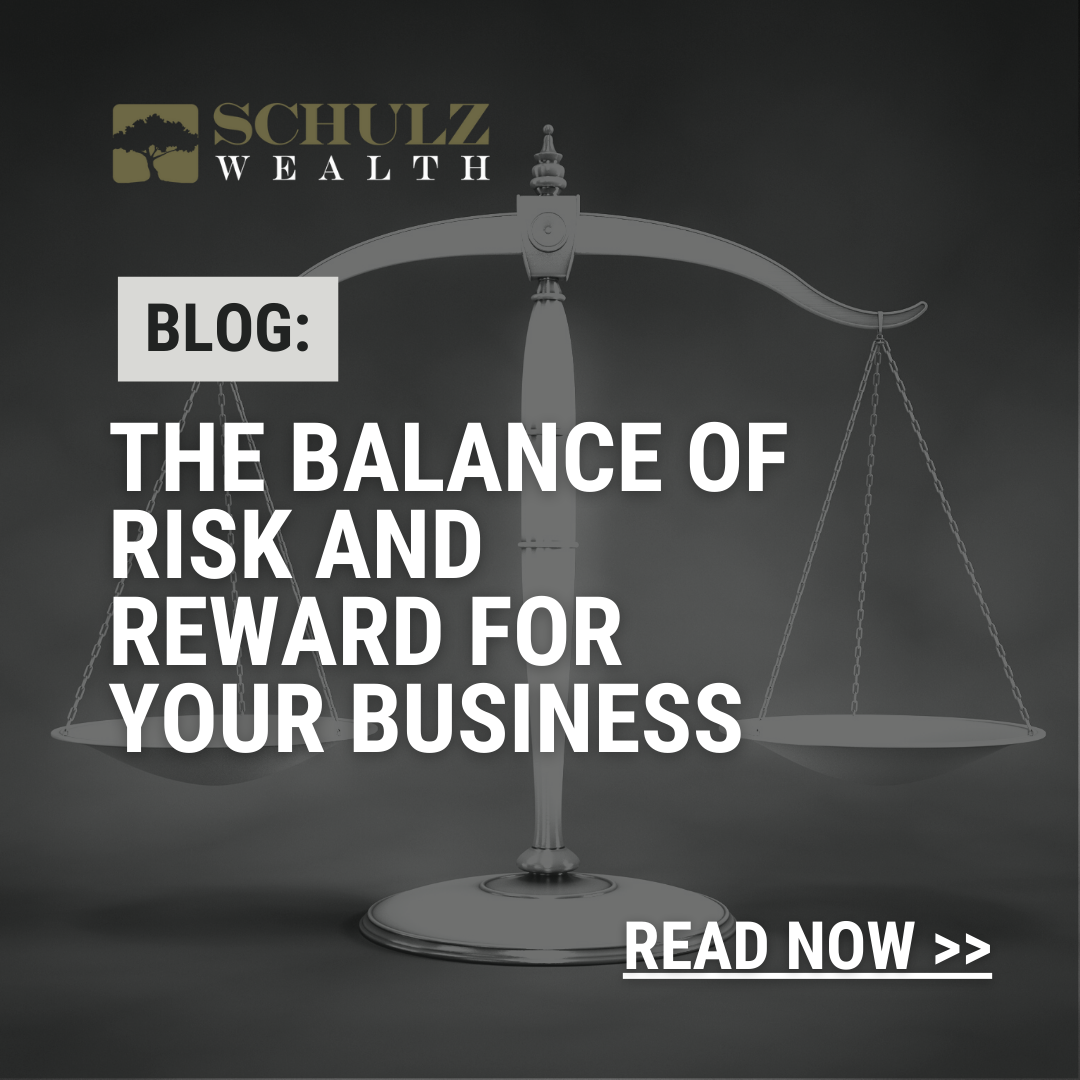Recently, I visited with an investment banker on the phone who, years prior, had transacted a large business sale in my neck of the woods. He asked if I knew the family, and I said, "Yup, they just cleared Chapter 13 personal bankruptcy". Silence ensued on the other side of the line before he stammered, "That was a solid nine-figure transaction! How on Earth did that happen"?
The truth is, it happens all of the time. Large sums of money can be lost when we don't understand the potential risks associated with the decisions we make. In my experience, we humans think of risk in terms of all or none: we either underestimate risk and take ones that are too large or are unwise, or we are so risk-averse that we take none at all. Rarely is either one of these options the correct answer. Rather, successful investing involves dialing in the right amount of risk and avoiding the extremes. Risk-taking is like an art: one must understand the delicacy related to limiting bad risks to minimize losses while also taking the necessary risks that could result in big rewards. Grasping the Risk-Reward Ratio and the idea of expected return is key.
How Risk Plays Out in Business
When a gambler goes on a roll and wins big, the casino will typically assign the gambler a host, whose job it is to ensure the gambler continues to place bets by making their stay comfortable and providing complimentary amenities, future bookings, and sometimes even charter plane service. The casino knows what the gambler likely doesn't; eventually, the gambler's luck will turn, and they will get their money back, and then some. So, for the casino, the additional risk that the gambler will continue to win is less than the likelihood that they will eventually lose. The gambler, if they choose to continue playing after they win it big, is participating in pretty risky behavior, as statistics show that they will likely lose some if not all of their newly acquired winnings.

Now, owning a business is not the same thing as gambling. However, there are plenty of risks involved that some tend to want to ignore or avoid. It's undeniable that ups and downs occur for any business, old or new, and that some of the inherent risks of being a business owner can result in losses big and small. But, with these inevitable risks also naturally comes the potential for very high returns - something that a non-entrepreneurial may not understand how to take advantage of. A business starter takes extreme risks far beyond what most people can tolerate, and I admire founders for their courage to bet on themselves and their dreams. Many are afraid of the risks associated with starting their own business ventures because their success or failure is tied so directly to how their business performs - they feel alone and deeply afraid of losing money.
The way we see it is: If you're not willing to take at least some risk, it is likely that you are forfeiting any chance for major returns.
The Pattern for Successful Business
Most successful businesses share a pattern. After the initial, large risk pays off, less risk is typically required to maintain moderate growth, cash flow, and profitability. This positive shift occurs because the business owner decreases risks via simple steps such as building out processes, hiring good people, and building solid credit lines and reserves.
The pattern continues as the business approaches demarcation points where a change of ownership emerges. Eventually, the inevitable aging of the founder creates the necessity for a business transition. This ownership transition is a massive opportunity for the business owner to take chips off the table. In the moment of a transaction, it isn't easy to discern the next steps, but poor decisions at this point will be devastating.
How do you ensure good decisions happen at this valuable time of transition? Here are some guidelines:
Create Structure
You have a business entity structure, but have you established a structure around your personal finances? The proper financial structure can protect your wealth from creditors, save money on taxes, and manage or cushion the blow of "what if's" like an untimely death.
Manage and Monitor
Often, structure in the form of a very intricate and expensive estate plan has been created but never implemented. The hard part is implementation and continual monitoring and management of your plan.
Diversification
Spreading wealth out among several different areas is the easiest and most effective way to both reduce risk while maintaining an appropriately large risk factor to help ensure your business earns a good return. You may be familiar with Marshall Goldsmith's book What Got You Here Won't Get You There. It's true: the extreme risk-taking that made you successful could be your undoing later in life.
.png?width=400&height=268&name=Untitled%20(400%20%C3%97%20268%20px).png)
In closing, I want to remind you that helping business owners through transition is what I do for a living. The steps outlined here are closely related to our AMPLE2 planning process for business owners. Don't hesitate to reach out if you want to know more about our process and how we can help.
These are our thoughts, have a great Thursday.
~ Rob Schulz, CFP
.png)

.png)

Leave a Comment